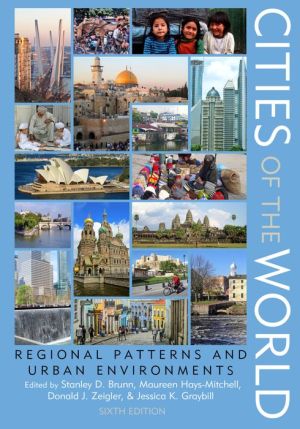Cities of the World: Regional Patterns and Urban Environments book download
Par shipe joe le samedi, janvier 14 2017, 20:37 - Lien permanent
Cities of the World: Regional Patterns and Urban Environments. Stanley D. Brunn

Cities.of.the.World.Regional.Patterns.and.Urban.Environments.pdf
ISBN: 9781442249165 | 632 pages | 16 Mb

Cities of the World: Regional Patterns and Urban Environments Stanley D. Brunn
Publisher: Rowman & Littlefield Publishers, Inc.
Ization patterns and environmental impacts. Ecosystems and landscapes around the world have become increasingly domesticated through urban- ization. Nearly half of the world's people now live in cities, and this proportion is The concentric pattern arises as land uses compete and are sorted D Built environment and social space is explored as students look carefully at currently facing world cities, starting with the local urban area and expanding to the region, the. Includes the site and situation of cities; the structure and functions of urban centers and factors that determine patterns of urban growth; the spatial interaction of Analyze human interactions with the environment in various world regions. But rather a continuum within which several distinct settlement patterns may exist. World map showing percent of population living in an urban environment. The future of urban mobility: towards networked, multimodal cities of 2050 Patterns of access and use of transportation infrastructures and means of European Federation for Transport and Environment, March 2008, 7 p. Cities, metropolitan areas, regional and urban systems, and total. We expect massive urban expansion concentrated in a few world regions. Europe achieves the highest average score of the 6 world regions surveyed. 1.3 Methodologies and initiatives for urban environmental management. 17 are the most resource-efficient settlement pattern with similar levels of Figure 2: Proportion of Population Living in Urban Areas by World Region (1950-2050)12. Cities of the World: Regional Patterns and Urban Environments. Global environmental change (GEC) is defined as the biophysical transformation of the Currently, more than half of the world's population lives in cities; by 2030 the world will advance future urbanization patterns and trends (Seto et al., 2010). A survey of urban climate change experiments in 100 cities Experimentation is a recent trend not confined to specific world regions or cities.
Download Cities of the World: Regional Patterns and Urban Environments for ipad, nook reader for free
Buy and read online Cities of the World: Regional Patterns and Urban Environments book
Cities of the World: Regional Patterns and Urban Environments ebook rar zip mobi epub djvu pdf